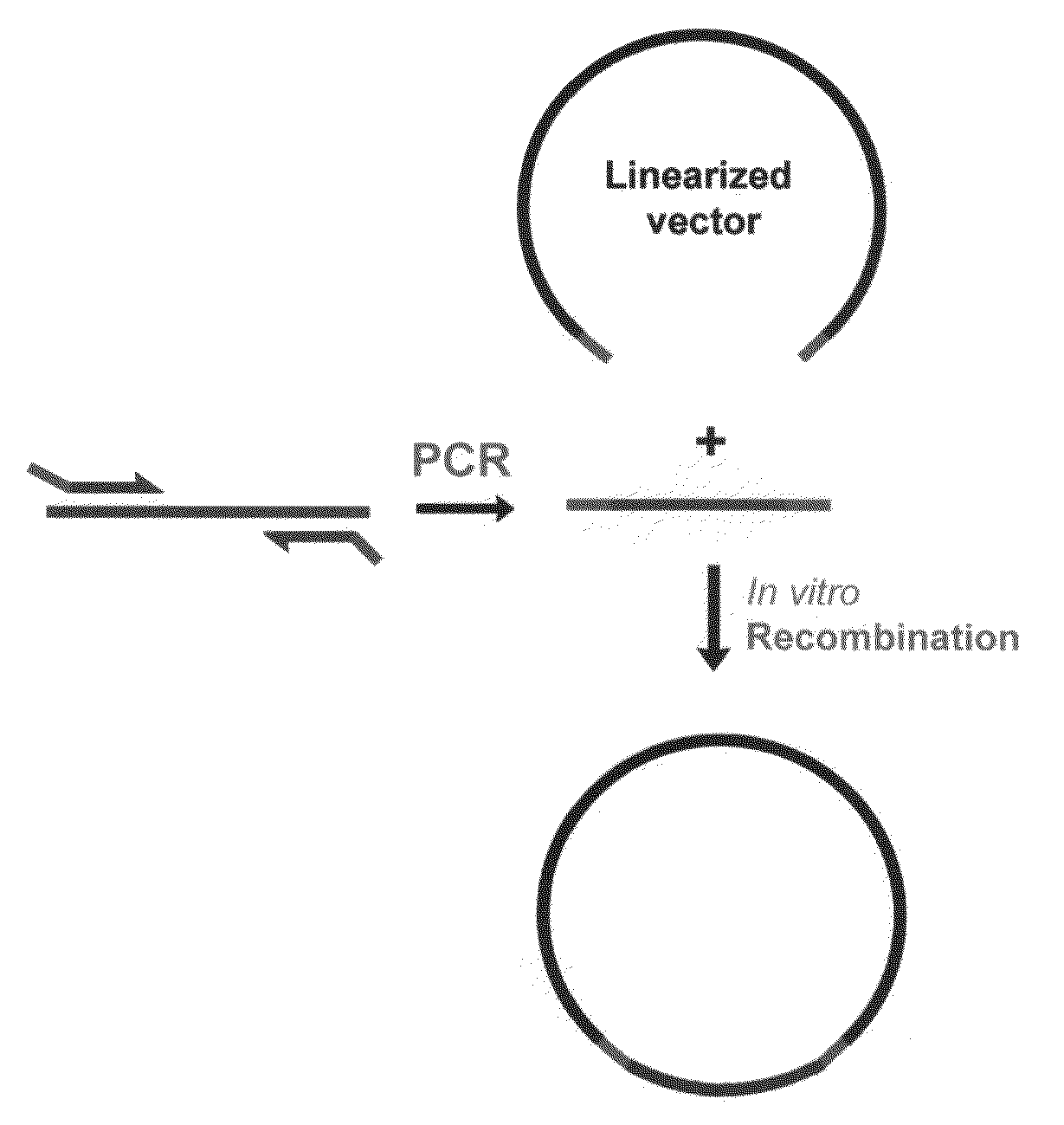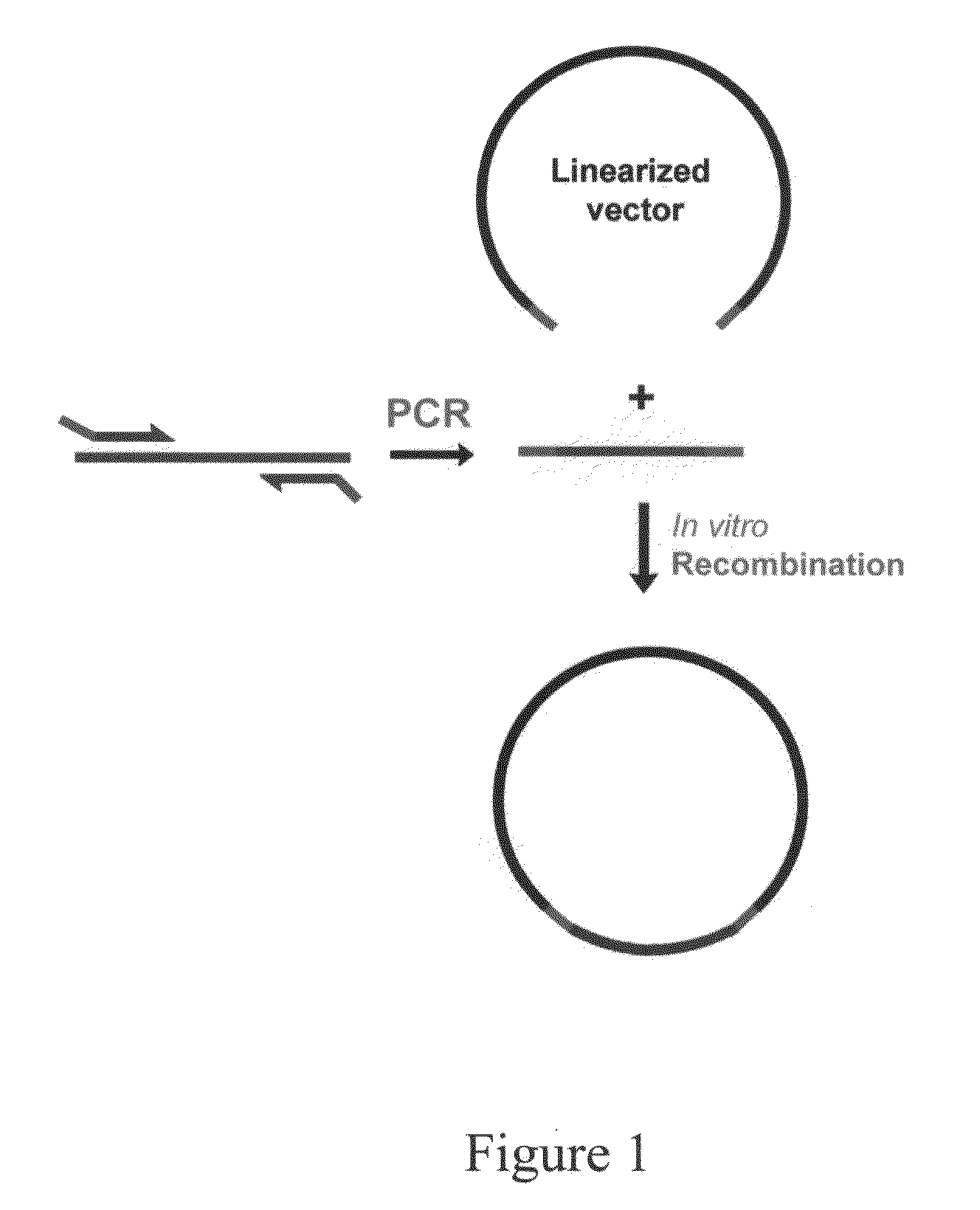Homologous recombination-based DNA cloning methods and compositions
a dna cloning and homologous technology, applied in the field of molecular cloning methods and compositions, can solve the problems of limiting the user to particular vectors and host cells, cumbersome and time-consuming conventional cloning methods, and low cloning efficiency
- Summary
- Abstract
- Description
- Claims
- Application Information
AI Technical Summary
Benefits of technology
Problems solved by technology
Method used
Image
Examples
Embodiment Construction
[0033]Unless defined otherwise, all technical and scientific terms used herein have the same meaning as commonly understood to one of ordinary skill in the art to which this invention pertains. Otherwise, certain terms used herein have the meanings as set in the specification. All patents, published patent applications and publications cited herein are incorporated by reference as if set forth fully herein. It must be noted that as used herein and in the appended claims, the singular forms “a,”“an,” and “the” include plural reference unless the context clearly dictates otherwise.
[0034]As used herein, “sequence” means the linear order in which monomers occur in a polymer, for example, the order of amino acids in a polypeptide or the order of nucleotides in a polynucleotide.
[0035]As used herein, the term “nucleotide sequence”, “nucleic acid” or “polynucleotide” refers to the arrangement of either deoxyribonucleotide or ribonucleotide residues in a polymer in either single- or double-s...
PUM
| Property | Measurement | Unit |
|---|---|---|
| temperature | aaaaa | aaaaa |
| Tm | aaaaa | aaaaa |
| temperature | aaaaa | aaaaa |
Abstract
Description
Claims
Application Information
 Login to View More
Login to View More - R&D
- Intellectual Property
- Life Sciences
- Materials
- Tech Scout
- Unparalleled Data Quality
- Higher Quality Content
- 60% Fewer Hallucinations
Browse by: Latest US Patents, China's latest patents, Technical Efficacy Thesaurus, Application Domain, Technology Topic, Popular Technical Reports.
© 2025 PatSnap. All rights reserved.Legal|Privacy policy|Modern Slavery Act Transparency Statement|Sitemap|About US| Contact US: help@patsnap.com


